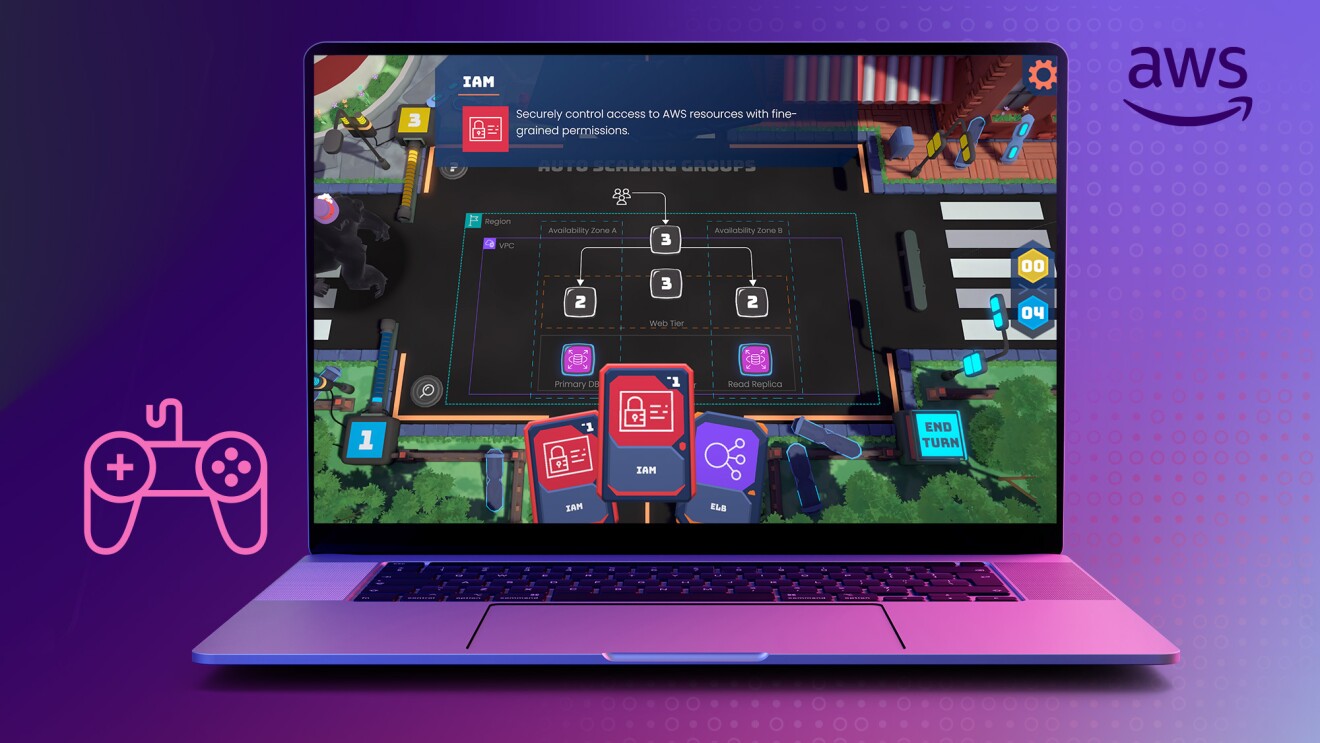I started working at AWS straight out of high school just over five years ago. I’d always been interested in doing some kind of trade, and my school counselor suggested I check out the Data Center Technician Training program at our local community college. As soon as she told me about it, I knew it was what I wanted to do. I’d only been in the program for a few weeks before Amazon offered me an apprenticeship. I was 18, and I haven’t looked back.

Once you’re through the first of many layers of tight security in a data center, it kind of looks like any other workplace, with rows of desks and cubicles. When we’re not working on tickets—I’ll explain what these are later—this is where we sit with our teammates, and sometimes our dogs.

A data center operates 24/7. As a technician, you’re assigned a list of issues at the start of your shift. These are called “tickets,” and you need to deal with them in a designated amount of time, depending on the severity of the problem. If you’re more experienced, like me, you tend to get a shorter list of tickets that are more complicated. Newer technicians usually get a longer list of simpler tickets.

One of the most eye-catching things you’ll see as you go further into a data center are the cables that run alongside and above the server racks. These cables are a vital part of the networking equipment, delivering high volumes of data at long distances and allowing the servers to talk to the outside world.
The server rooms are known as the “red zone.” This is the most high-security area of the data center. When I go into the red zone with a batch of tickets, I get so focused on what I’m doing that I hardly ever look at the clock. I call it the “time warp.”

For me, the most surprising thing about working for AWS is that you just don’t know what’s going to happen next. All of a sudden, a new type of rack will come in, and you have to learn all the technology that’s in that one and be ready to troubleshoot it.

My team is called data center operations (DCO). We’re mostly in charge of anything that has to do with a host network, server racks, stuff like that. But there are lots of other teams here and different roles you can do—everything from logistics to engineering to infrastructure delivery.

My colleague Dallin Puzey is on the infrastructure delivery team. They install all the new racks and network devices. Dallin is a manager looking after a team of 12 people now, but he started as a rack install technician after going through the Data Center Technician Training program.

New server racks come into the data center every day. Dallin's team ensures the racks are installed and connected properly.
First, the team goes through a long checklist to make sure every rack is in pristine condition. The racks have tilt-indicators, so the team can tell if a rack spent any time on its side—in other words, whether it fell over in transit. If any components were to come loose in such complex hardware, it could be a critical issue. If the team has any doubts about a rack, they will send it back.

If a rack passes all the checks, a few things need to be done before it’s ready to install. My colleague Tasha Engum is part of the data center engineering operations (DCEO) team. They look after a lot of the equipment maintenance.

Tasha and her team will put the “whips” on the racks after they are taken into the red zone to be installed. A whip is a special cable that manages the electrical supply for computers, servers, and networking devices.

Tasha’s team is responsible for maintaining many of the critical support systems in the data center. At the start of every shift, Tasha walks the whole building, checking everything for alarms. This includes making sure that everything in the air handling units, fire systems, circuit breakers, electrical rooms, and much more is working as it should.

If there are no issues, Tasha moves straight to her daily maintenance tasks and tickets. Tasha says that one of the best parts of her job is when something breaks, so she can take it apart and fix it. She also likes the fact that she gets to learn something new every day.
It’s the same for me. I like the people I work with, I like my position, and I like what I do. I encouraged my brother Ramon to look into opportunities with AWS, and now he works here as a technician, too. I wake up every morning, and I feel good about going to work.

This video and story are part of the new AWS docuseries, Data Centered: Eastern Oregon, which celebrates local community members whose lives are being changed for the better by the cloud—in unexpected ways. Watch the Data Centered: Eastern Oregon series.
Learn about our investments in eastern Oregon and discover more about our impact in communities where we have data centers.















